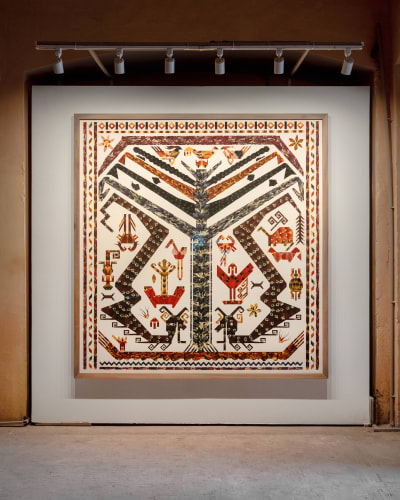Lahore Biennale 2024 featuring Jennifer Tee: Lahore, Pakistan
The third edition of the Lahore Biennale, scheduled to run from Oct 5-Nov 8, 2024, addresses the subject of ecology and sustainable futures from the perspectives of Lahore, and Asia more broadly. Given recent history, the urgency of environmental issues is clear: Lahore, a rapidly growing city of over twelve million, regularly ranks as the most polluted in the world. And while southern Pakistan is still recovering from the devastating floods of 2022, the northern Punjab province faces the prospect of permanent drought, with the River Ravi choked by dams close to the source, and water tables already severely depleted as a result of overuse, a consequence of the colonial era conversion of pastoral land to perennial cultivation through the establishment of the world’s largest network of canals. The Biennale thus offers a reckoning of the multiple challenges.
But Lahore is more than the sum of the challenges that confront it. Like the country more broadly, the city is dense with heritage that reaches back thousands of years, all testament to the long history of human co-existence with, and adaptation to, the environment and natural elements to be found in South Asia, to the resilience, and the resourcefulness, of the people who have called it home. This is evidenced by several of the Biennale venues, such as Lahore Fort or, for the first time this edition, Shalimar Gardens. In addition to being beautiful, these structures also suggest different relations to nature. An example of this can be seen in the ingenious gravity- and pressure-driven system that originally supplied Shalimar’s lush and elaborate gardens and four hundred fountains with flowing water. Though the Mughals did not operate with such concepts, their hydrology was carbon-neutral by design.
The Biennale will highlight the city’s heritage by putting it in dialogue with contemporary work, many of them new commissions, by some sixty artists, from Pakistan and over twenty-five countries. Many will investigate or suggest the ways that vernacular culture to be found in architectural and arts and craft traditions from different parts of the Global South can be keys to unlocking history as a resource for imagining sustainable futures. In doing so, the Biennale not only puts a human face to Lahore and Pakistan, but also gives agency to Pakistani society and suggests how it can contribute to global conversations on climate. In short, the Biennale will think with artists of the rich cultural heritage of Asia and the Global South, and how it can be more than folklore, but knowledge that can help societies reimagine their relationships to earth, air, water, and the multitude of life.


